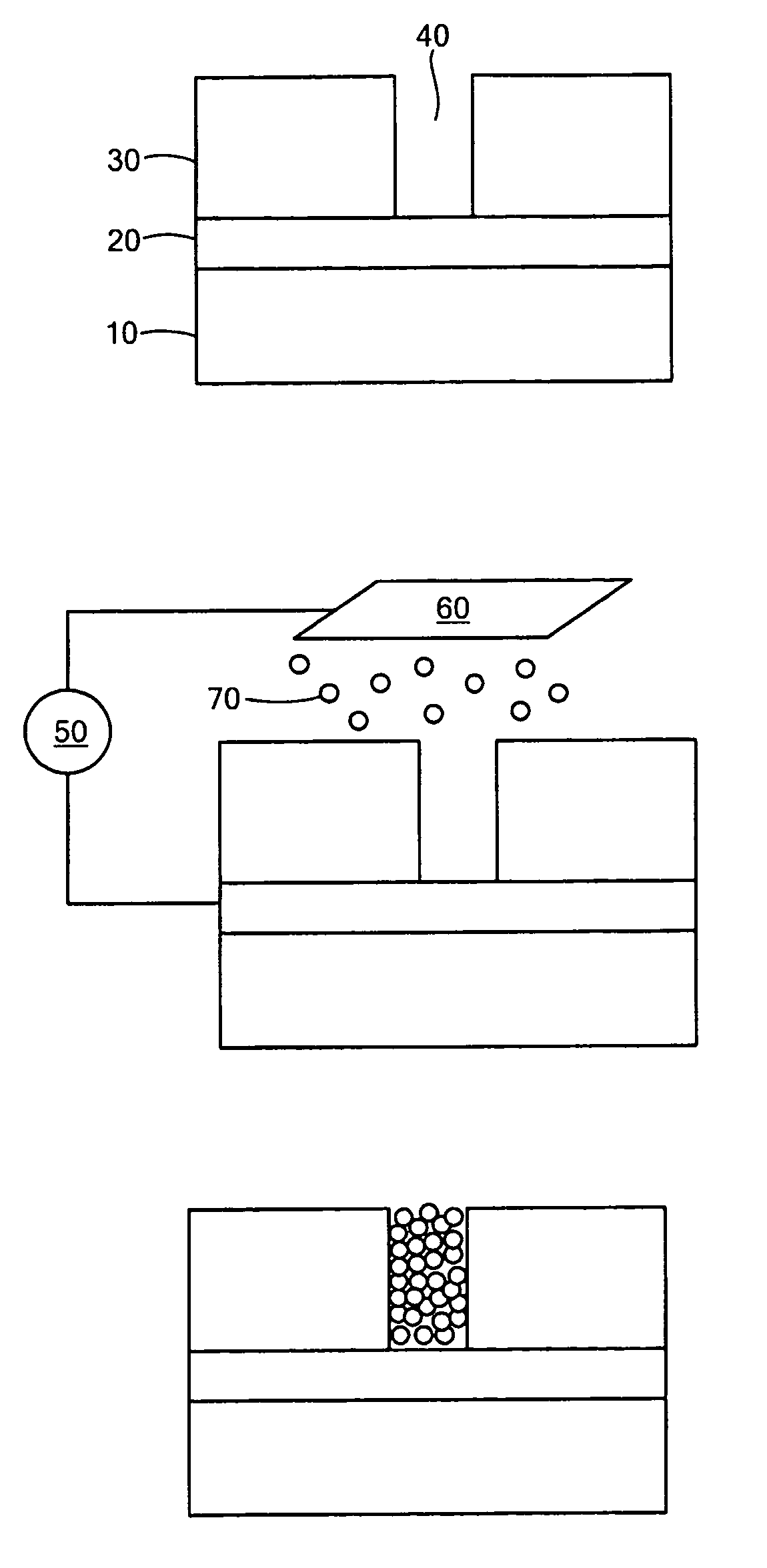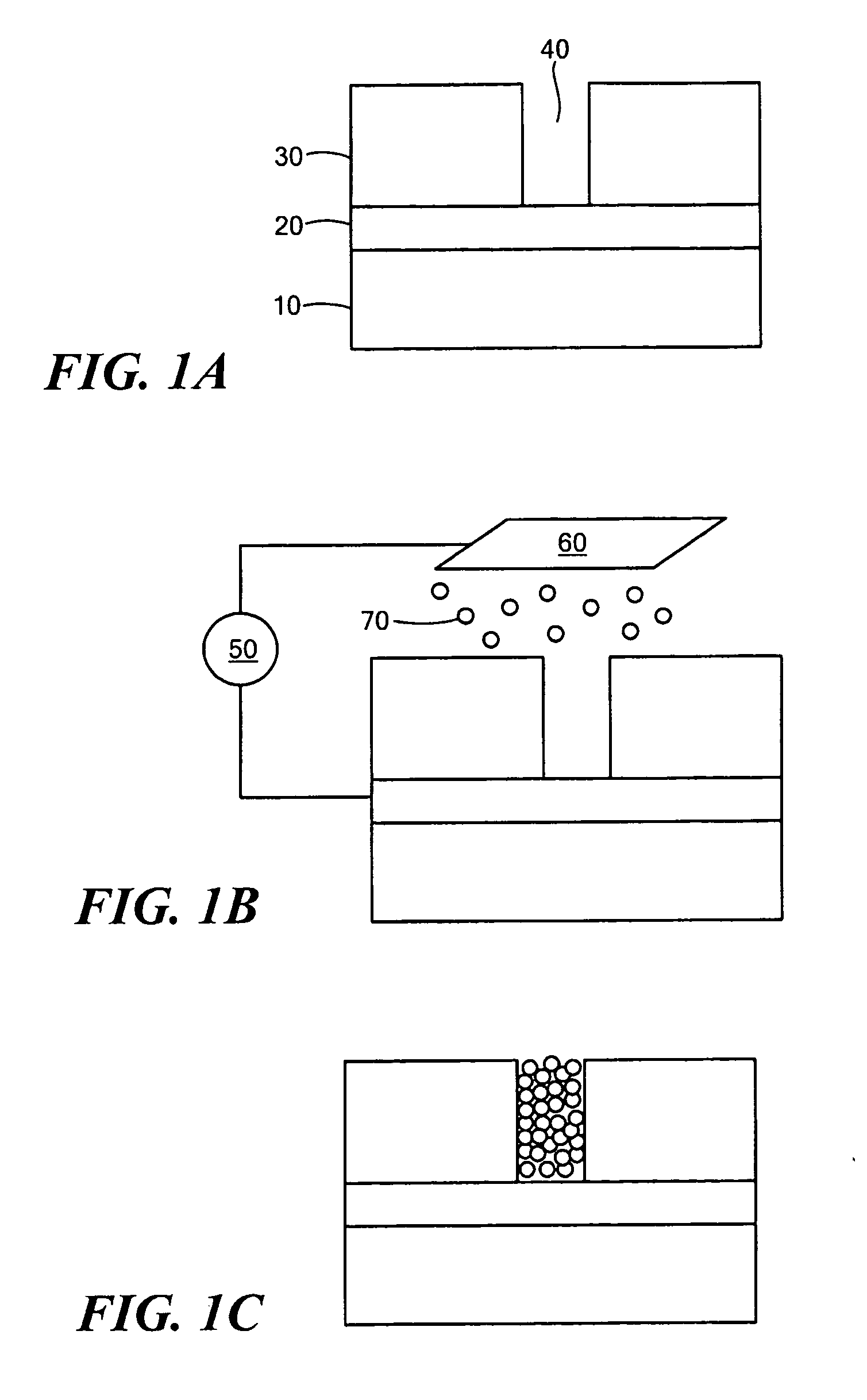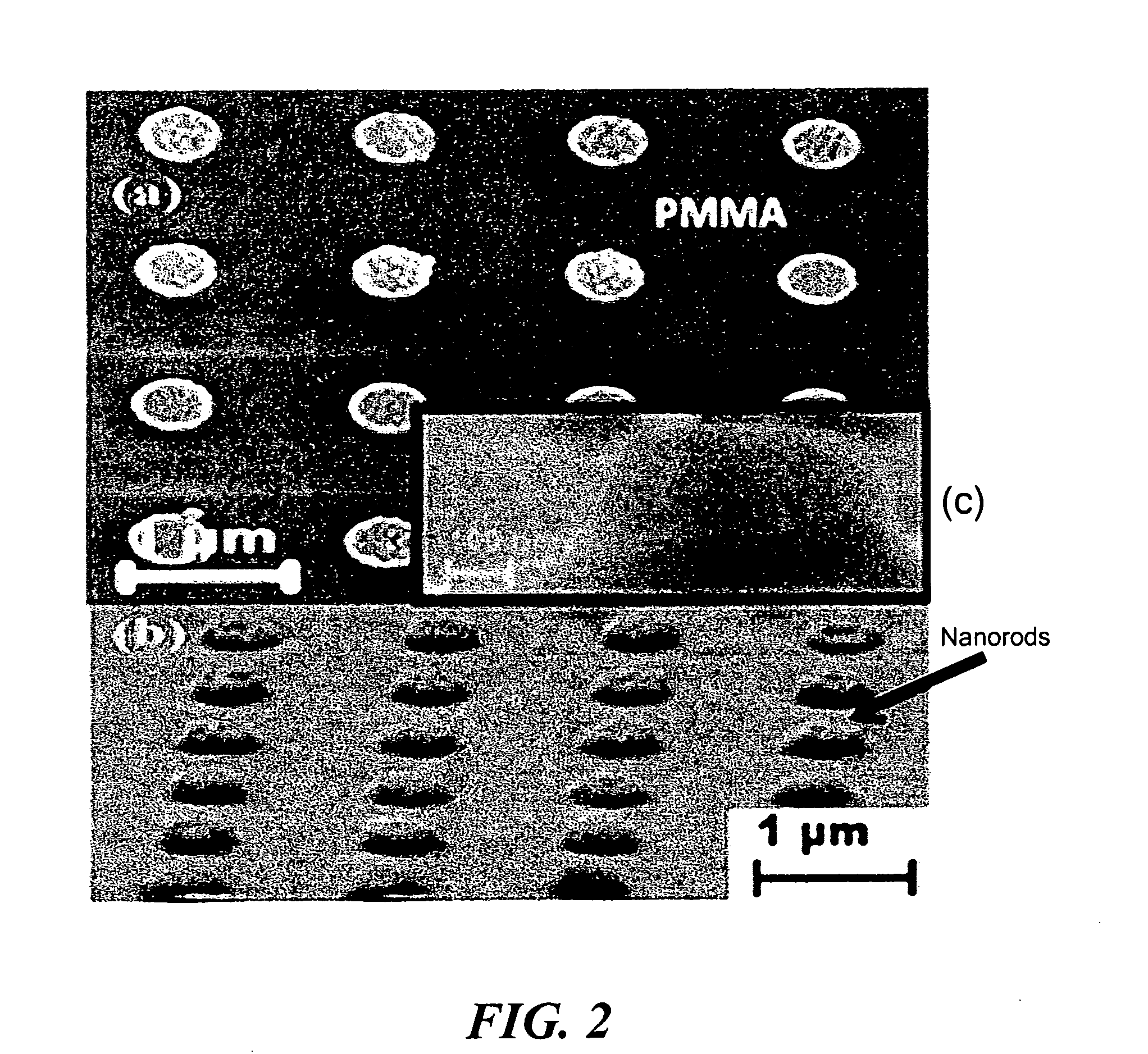Nanoscale interconnects fabricated by electrical field directed assembly of nanoelements
a technology of electrical field and nanoelement, which is applied in the direction of liquid/fluent solid measurement, fluid pressure measurement, peptide, etc., can solve the problems of process providing no control over the length of nanorods, unsuitable specific application of fabrication techniques, etc., and achieve the effect of controlling the directed assembly process
- Summary
- Abstract
- Description
- Claims
- Application Information
AI Technical Summary
Benefits of technology
Problems solved by technology
Method used
Image
Examples
example 1
Materials and Methods
[0043]The following materials and methods were used in the Examples which follow. Gold nanoparticles (50 nm in diameter) supplied by Ted Pella Corporation were used in the assembly. The concentration of the particles in the aqueous suspension was 4.5×1010 particles / cm3. The zeta potential of the nanoparticles was measured using a Malvern Zeta Plus 90 zeta-potentiometer. To create nanoscale vias shown in FIG. 1(a), Cr / Au (2 nm Cr / 120 nm Au) was sputtered on SiO2 / Si (470 nm layer of SiO2 on 380 μm thick Si) wafer and then diced into 12 mm x 12 mm chips. Positive photoresist (poly-methyl-methacrylate (PMMA)) was spin-coated on the precleaned Cr / Au chips (precleaning with Piranha solution, H2SO4 / H2O2, 2 / 1 vol / vol). The nanoscale via array was fabricated (in PMMA) using conventional electron-beam lithography. In total, 256 vias were patterned over a 40 μm×40 μm area. The via dimensions were in the range of 100-150 nm in depth, and 100-500 nm in diameter with separati...
example 2
Electric Field-Directed Assembly of Nanorods from Gold Nanoparticles
[0044]FIGS. 2(a) and 2(b) show top-down and high-angle-viewed scanning electron micrographs (SEMs) of an array of vias each 500-nm in diameter and 150-nm deep after electric-field directed assembly of 50-nm gold nanoparticles. An AC voltage of 12 Vpp (where pp denotes peak-to-peak) with a frequency of 10 kHz and a DC offset of 2 V was applied for 90 s during the assembly process. The SEM image of FIG. 2(b) also shows that the height of the produced nanorods is uniform over the array and exceeds the PMMA surface. An atomic force microscopy (AFM) scan of a 5 μm×5 μm area using a PSIA XE150 atomic force microscope is shown in FIG. 3. While the lateral dimensions of the nanorods were influenced by AFM tip effects, the vertical dimensions were in the range of 90-125 nm. By taking the 150-nm PMMA thickness into account, the results over 16 nanorods showed that the height varied between 240 nm (min) and 275 nm (max) with a...
example 3
Effects of Electric Field Parameters on Nanoparticle Assembly
[0045]The effects of various parameters of the applied electric field on the nature of assembly were investigated. The behavior of nanoparticle assemblies in the vias under influence of individually applied DC and AC voltages was studied separately. FIG. 4 shows a topdown-viewed SEM after assembly was carried out by employing a uniform (DC) voltage of 2V for 90 s. Only a few particles were assembled in the vias. The induced charge on the 50-nm gold nanoparticles (measured zeta potential of −55 mV) is estimated to be O(10−17) C. Using Stokes' law, the particles were estimated to reach a terminal velocity of ˜30 μm / s at an applied voltage of 2 V. Although the velocity of the particles was sufficient to reach the template surface, most of the regions in the vias remained empty without having nanoparticle assembly.
[0046]In order to test a dynamic electric field (AC) only, the voltage was set to 12 Vpp with a frequency of 10 kH...
PUM
| Property | Measurement | Unit |
|---|---|---|
| steady-state current | aaaaa | aaaaa |
| DC voltage | aaaaa | aaaaa |
| AC voltage | aaaaa | aaaaa |
Abstract
Description
Claims
Application Information
 Login to View More
Login to View More - R&D
- Intellectual Property
- Life Sciences
- Materials
- Tech Scout
- Unparalleled Data Quality
- Higher Quality Content
- 60% Fewer Hallucinations
Browse by: Latest US Patents, China's latest patents, Technical Efficacy Thesaurus, Application Domain, Technology Topic, Popular Technical Reports.
© 2025 PatSnap. All rights reserved.Legal|Privacy policy|Modern Slavery Act Transparency Statement|Sitemap|About US| Contact US: help@patsnap.com



